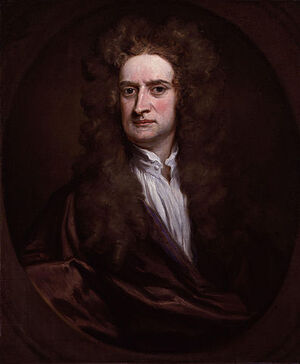Isaac Newton (nonfiction)
Sir Isaac Newton FRS (25 December 1642 – 20 March 1726/27) was an English physicist and mathematician (described in his own day as a "natural philosopher") who is widely recognised as one of the most influential scientists of all time and a key figure in the scientific revolution.
His book Philosophiæ Naturalis Principia Mathematica ("Mathematical Principles of Natural Philosophy"), first published July 5, 1687, laid the foundations for classical mechanics.
Newton made seminal contributions to optics, and he shares credit with Gottfried Leibniz for the development of calculus.
On October 2, 1667, Newton became a fellow at Trinity College, Cambridge. He had earned his bachelor's degree in 1665 and then spent two years at home in Lincolnshire inventing much of differential and integral calculus while Cambridge was closed due to plague.
On October 24,1676, Newton summarized the state of development of his method of fluxions and power series in the "Epistola posterior," which he sent to Oldenburg to transmit to Leibniz.
On December 10, 1684: Newton's derivation of Johannes Kepler's laws from his theory of gravity, contained in the paper De motu corporum in gyrum, is read to the Royal Society by Edmond Halley.
In the News
Fiction cross-reference
Nonfiction cross-reference
- Calculus (nonfiction)
- Edmond Halley (nonfiction)
- Johannes Kepler (nonfiction)
- Gottfried Leibniz (nonfiction)
- Hypotheses non fingo (nonfiction)
- Gottfried Wilhelm Leibniz (nonfiction)
- Newton's method (nonfiction)
- Mathematics (nonfiction)
- Physics (nonfiction)
External links:
- Isaac Newton @ Wikipedia

